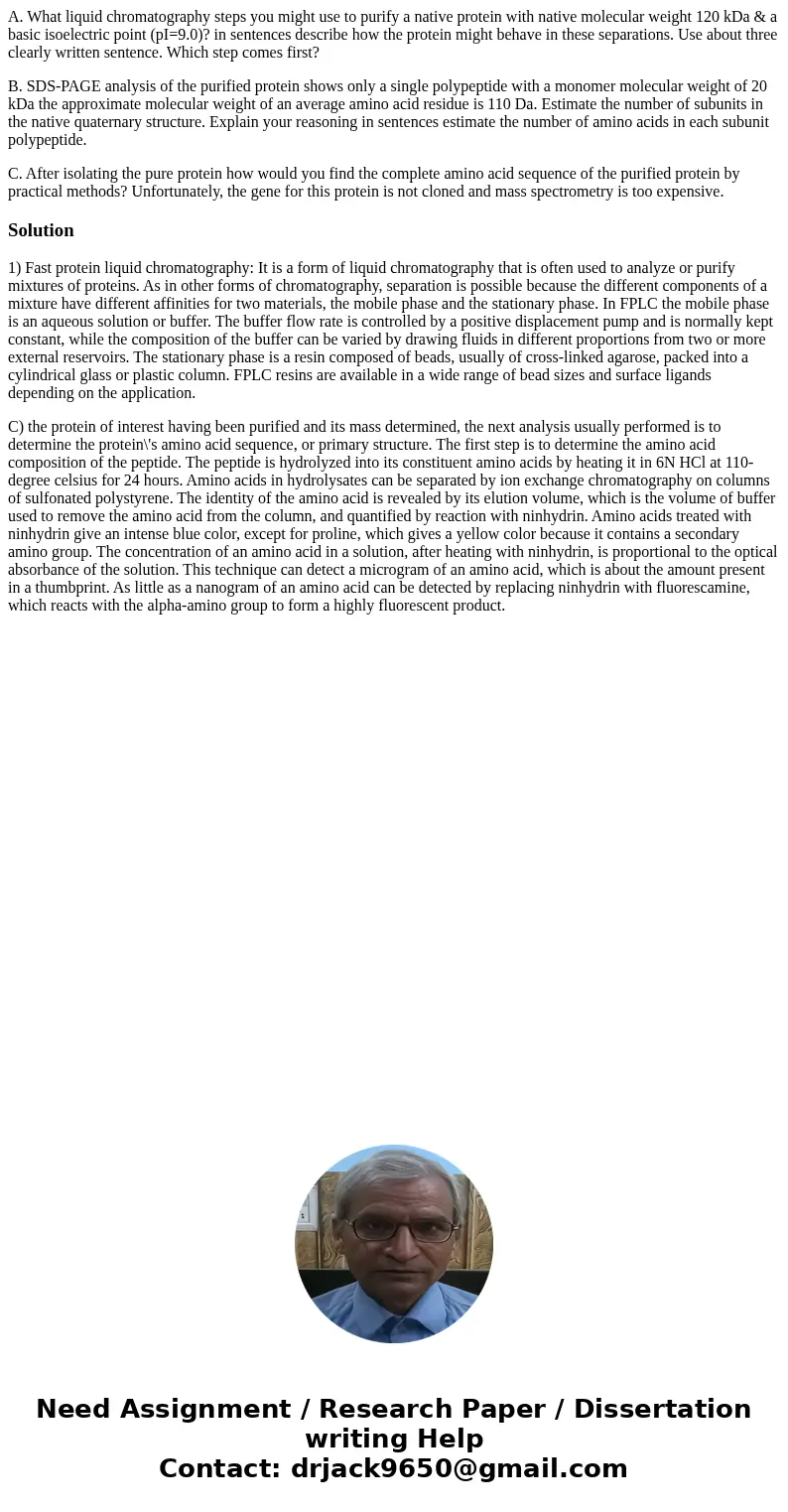A What liquid chromatography steps you might use to purify a
A. What liquid chromatography steps you might use to purify a native protein with native molecular weight 120 kDa & a basic isoelectric point (pI=9.0)? in sentences describe how the protein might behave in these separations. Use about three clearly written sentence. Which step comes first?
B. SDS-PAGE analysis of the purified protein shows only a single polypeptide with a monomer molecular weight of 20 kDa the approximate molecular weight of an average amino acid residue is 110 Da. Estimate the number of subunits in the native quaternary structure. Explain your reasoning in sentences estimate the number of amino acids in each subunit polypeptide.
C. After isolating the pure protein how would you find the complete amino acid sequence of the purified protein by practical methods? Unfortunately, the gene for this protein is not cloned and mass spectrometry is too expensive.
Solution
1) Fast protein liquid chromatography: It is a form of liquid chromatography that is often used to analyze or purify mixtures of proteins. As in other forms of chromatography, separation is possible because the different components of a mixture have different affinities for two materials, the mobile phase and the stationary phase. In FPLC the mobile phase is an aqueous solution or buffer. The buffer flow rate is controlled by a positive displacement pump and is normally kept constant, while the composition of the buffer can be varied by drawing fluids in different proportions from two or more external reservoirs. The stationary phase is a resin composed of beads, usually of cross-linked agarose, packed into a cylindrical glass or plastic column. FPLC resins are available in a wide range of bead sizes and surface ligands depending on the application.
C) the protein of interest having been purified and its mass determined, the next analysis usually performed is to determine the protein\'s amino acid sequence, or primary structure. The first step is to determine the amino acid composition of the peptide. The peptide is hydrolyzed into its constituent amino acids by heating it in 6N HCl at 110-degree celsius for 24 hours. Amino acids in hydrolysates can be separated by ion exchange chromatography on columns of sulfonated polystyrene. The identity of the amino acid is revealed by its elution volume, which is the volume of buffer used to remove the amino acid from the column, and quantified by reaction with ninhydrin. Amino acids treated with ninhydrin give an intense blue color, except for proline, which gives a yellow color because it contains a secondary amino group. The concentration of an amino acid in a solution, after heating with ninhydrin, is proportional to the optical absorbance of the solution. This technique can detect a microgram of an amino acid, which is about the amount present in a thumbprint. As little as a nanogram of an amino acid can be detected by replacing ninhydrin with fluorescamine, which reacts with the alpha-amino group to form a highly fluorescent product.

 Homework Sourse
Homework Sourse